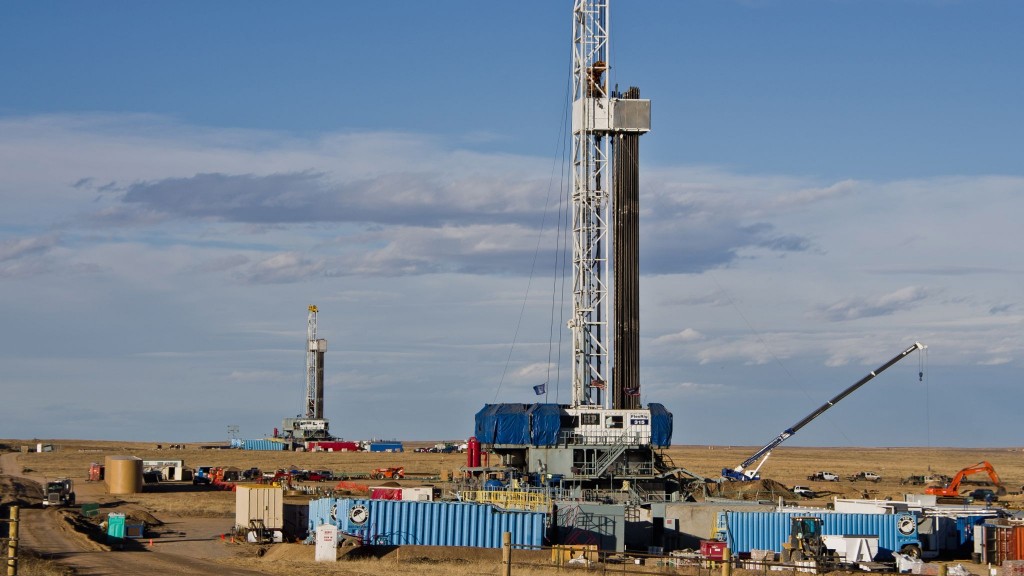Oklahoma earthquakes: Oil, gas producers asked to decrease wastewater disposal operations
Plan to reduce Oklahoma earthquakes to be phased in over the next two months

State regulators are hoping a 25 per cent reduction in wastewater disposal operations will help decrease the number of Oklahoma earthquakes. PBS photo.
TULSA, Okla. _ State regulators on Monday asked oil and natural gas producers in central Oklahoma to decrease their wastewater disposal operations to try to temper the sharp increase in the number and severity of earthquakes in the energy-rich state.
The proposal released by the Oklahoma Corporation Commission covers more than 400 wells across 6,000 square miles, and it comes less than a month after the commission issued a similar plan covering nearly 250 wells in northwestern Oklahoma. Oklahoma has about 3,800 disposal wells statewide.
The commission wants the central Oklahoma cuts to be phased in over the next two months, and it plans to review the efficacy of the adjustments in about six months. Commission spokesman Matt Skinner said disposal volumes are about 970,160 barrels a day in the region, and regulators want to get that number down to 724,000 barrels a day, which is about a 25 per cent cut from current levels. A barrel equals 42 gallons.
The number of earthquakes with a magnitude 3.0 or greater has skyrocketed in Oklahoma, from a few dozen in 2012 to more than 900 last year. Last month, a 5.1-magnitude temblor hit the state, the third-largest ever recorded in the state. Scientists have linked the quakes to the underground disposal of wastewater from oil-and-gas production.
It’s too early to tell whether volume limits have been successful in Oklahoma. Data from the U.S. Geological Survey show that in the 20 days before the 5.1 temblor hit on Feb. 13, there had been 31 earthquakes in northwestern Oklahoma. In the 20 days since regulators asked for the cuts on Feb. 16, there were 30 earthquakes centred in the region.
“Researchers have made it very clear to us that there is no off switch (to seismic activity),” Skinner said. “It will take time.”
The proposed reductions come at a precarious time for the oil and gas-producing state. Sharp declines in oil prices have sent Oklahoma’s economy into a tailspin and a $1.3 billion shortfall.
“It does not help when the commission contacts an operator who’s struggling with $30 oil and trying to keep his business going, that it’s going to possibly impact their cash flow situation,” said Tim Baker, director of the commission’s Oil & Gas Conservation Division. “But the operators recognize the earthquake problem in Oklahoma is a serious problem.”
Baker said pushback from producers from previous plans issued by the commission has been minimal, with two companies initially objecting to the reductions but ultimately complying. Under the current interpretation of the law, commission staff can only recommend that a producer reduce disposal volumes. But if an operator balks at complying, the staff will go to court to force compliance.
A message seeking comment on Monday’s wastewater disposal plan from the Oklahoma Oil & Gas Association was not immediately returned Monday.
Both the energy industry and scientists agree that hydraulic fracturing, or fracking, doesn’t directly cause significant earthquakes. Where they disagree is over what role injection of the byproduct wastewater back into the deep ground plays in inducing the quakes.
U.S. Geological Survey seismologist Susan Hough said the commission’s report “added to a body of knowledge” about links between wastewater disposal and earthquakes. Hough co-authored a study that concluded the spike in the number of Oklahoma earthquakes was likely the result of industrial activities over the last century, such as oil and gas drilling.
“More as a private citizen, it’s gratifying to see steps being taken to know about the problem,” she said. “I would view that as a positive step whether I was a scientist or not,” she said.
The Canadian Press.






